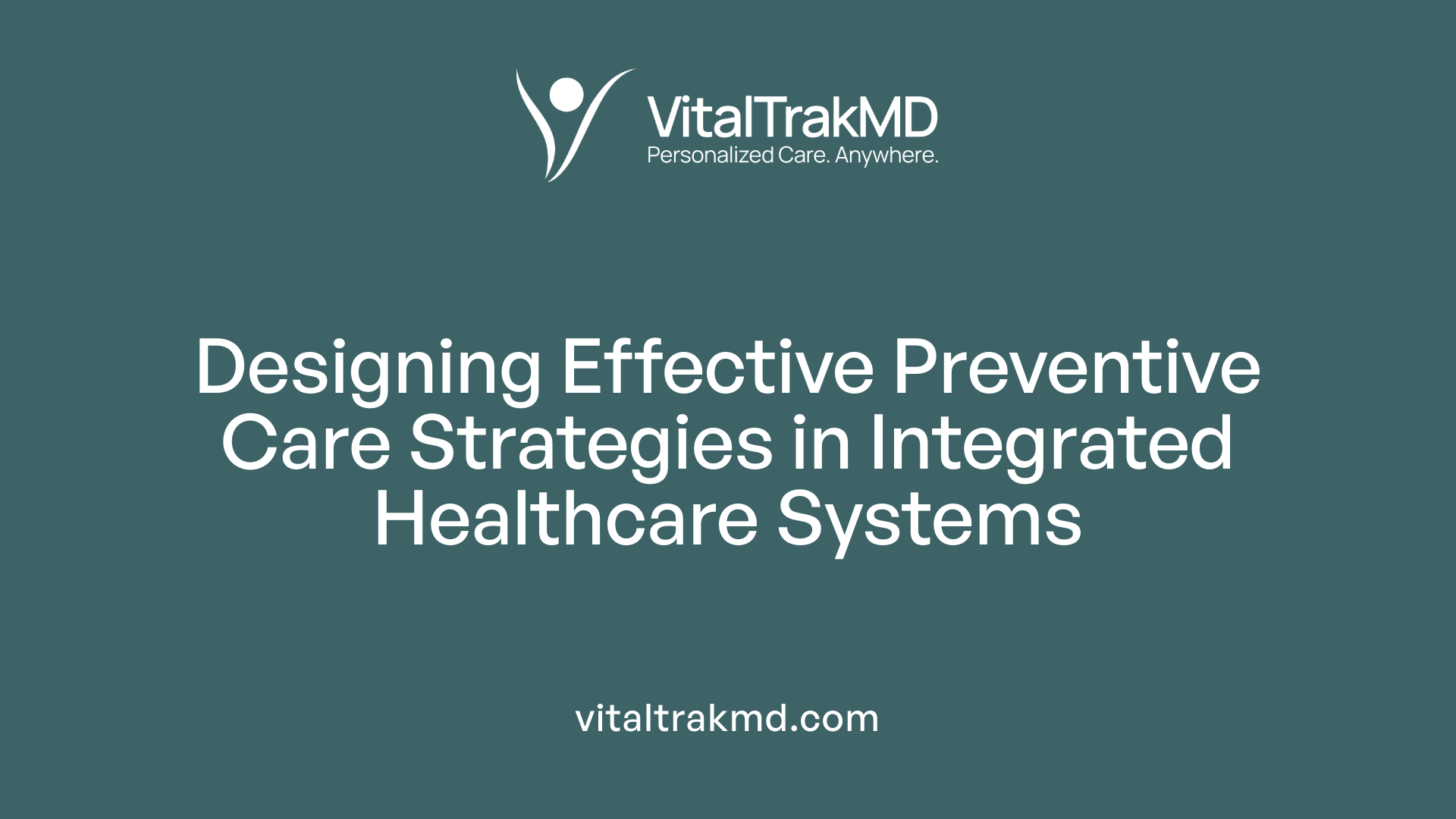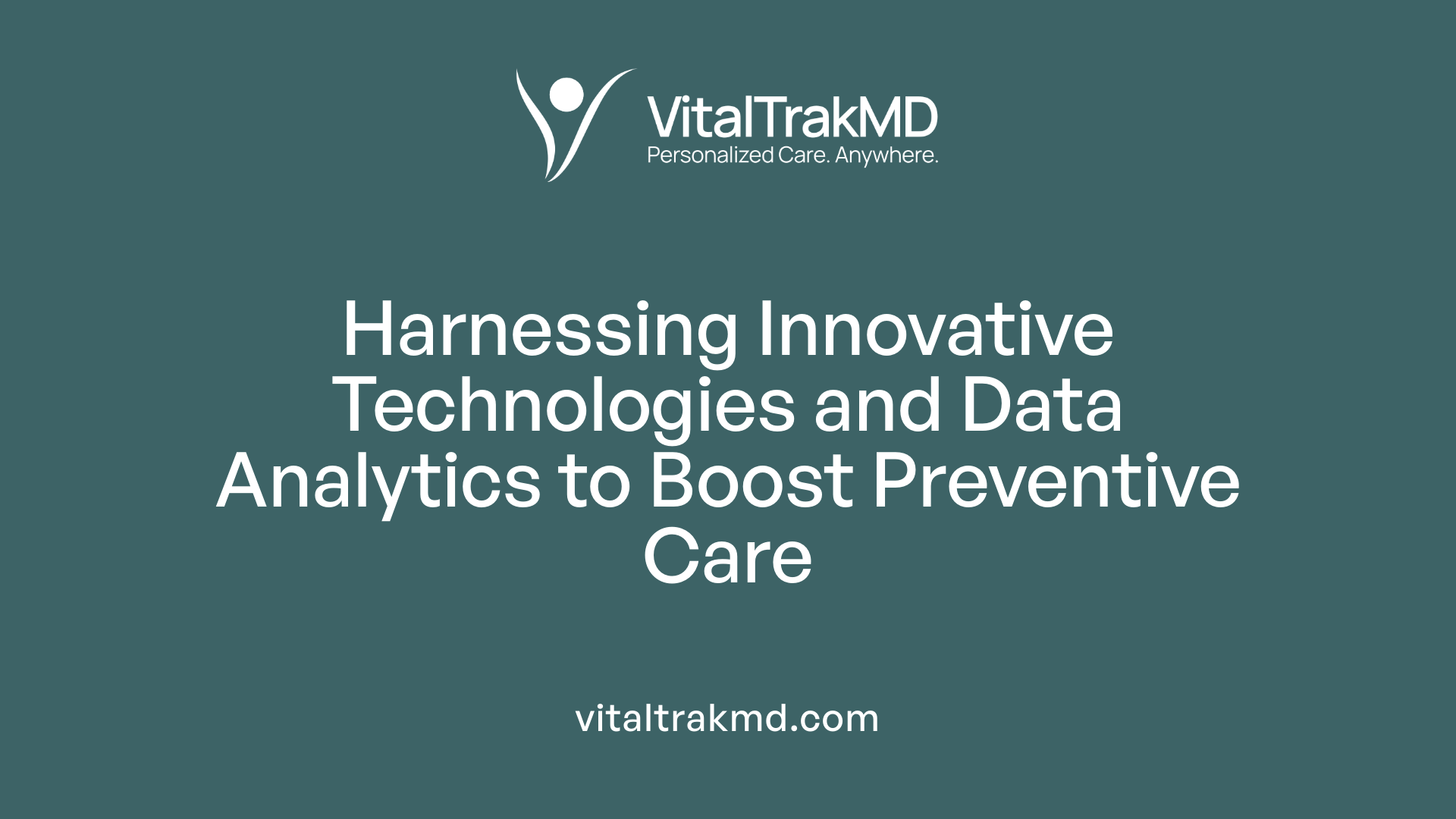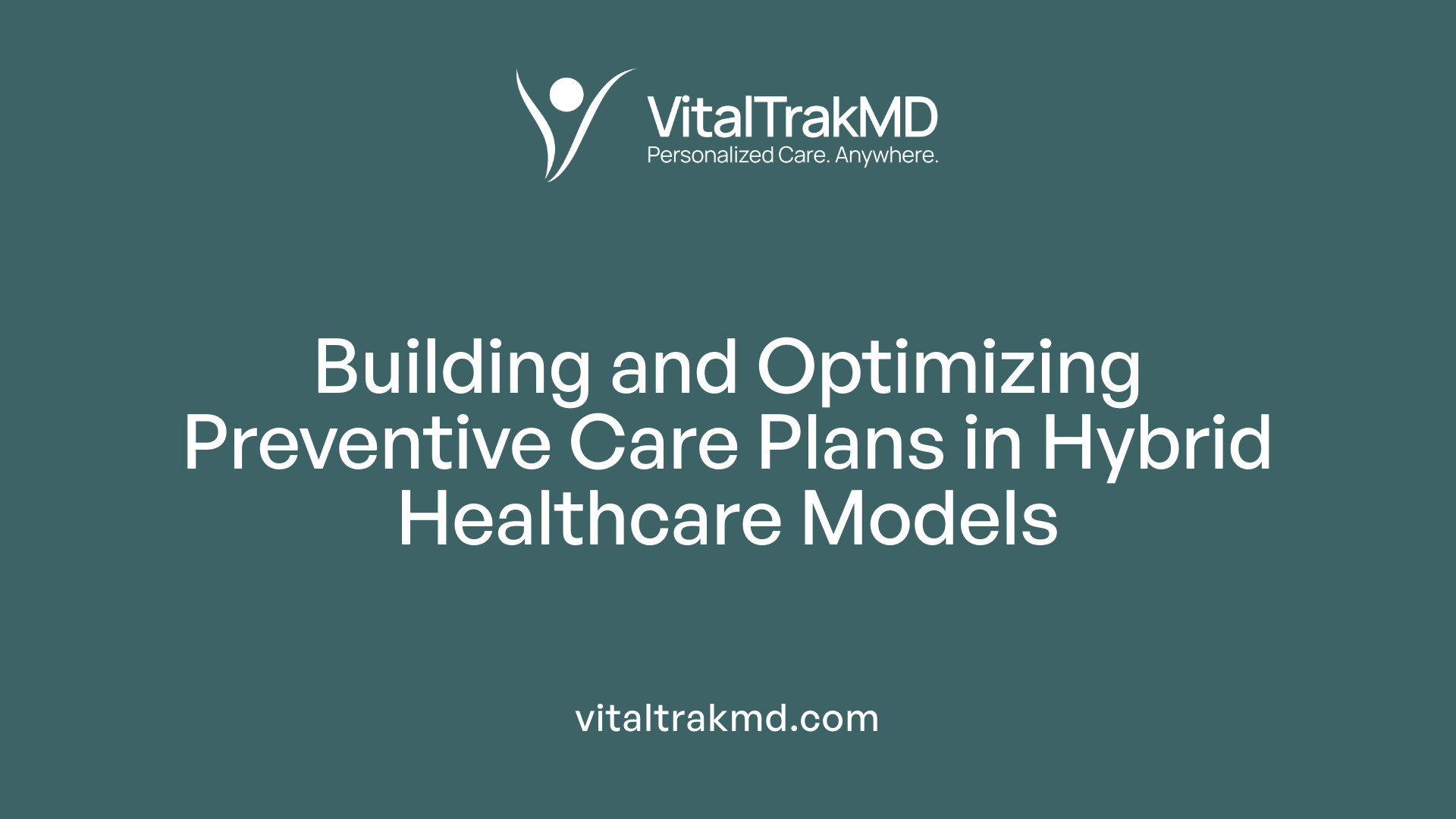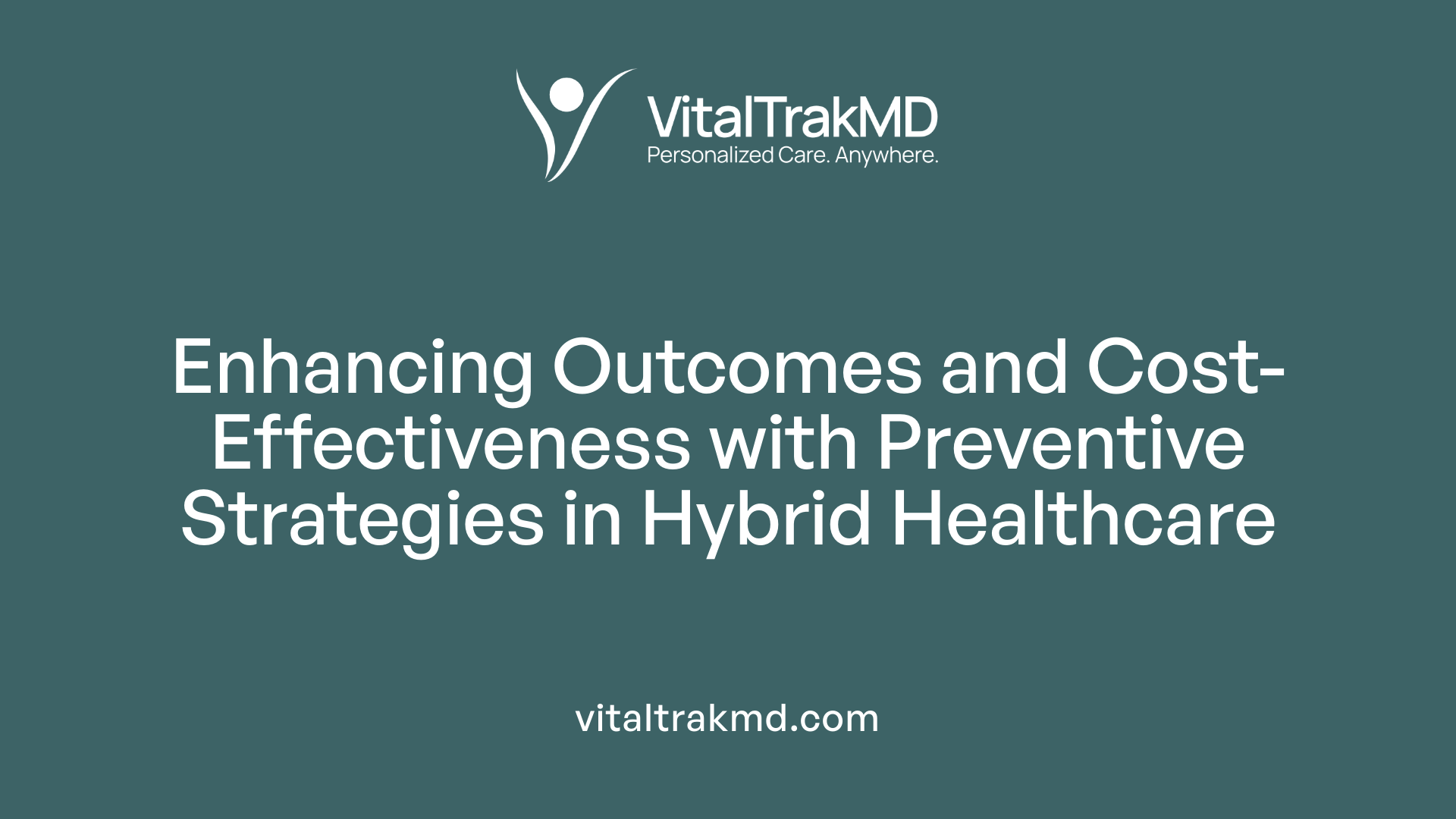Building Effective Preventive Care Plans in Hybrid Healthcare

Innovations and Strategies for Effective Prevention
The landscape of healthcare is rapidly evolving with hybrid models that integrate in-person and digital services. Building effective preventive care plans within this context is essential for improving patient outcomes, reducing costs, and fostering equitable access. This article explores evidence-based strategies, technological innovations, frameworks, and practical principles to optimize preventive efforts across diverse healthcare environments.
Leveraging Digital Support Tools to Enhance Preventive Care Processes
Electronic health record (EHR) data plays a vital role in improving preventive care in hybrid healthcare settings. By analyzing existing patient information, clinics can identify individuals who are at higher risk for certain health issues, such as needing screenings or vaccinations. This proactive approach ensures that at-risk populations receive timely interventions, which can significantly improve health outcomes.
Implementation of clinical reminders and decision support systems further supports clinicians in delivering preventive services. These tools generate alerts and prompts during patient visits, reminding healthcare providers about necessary screenings like mammograms, colonoscopies, or immunizations. For example, studies have shown that clinical reminders can increase care processes with an odds ratio of 3.46, indicating they substantially boost preventive service delivery.
Evidence from recent research confirms the effectiveness of these digital strategies. The use of electronic health record-based alerts, combined with clinician education and multicomponent interventions, has been associated with marked improvements in preventive care processes.
To establish a seamless preventive care experience, hybrid models integrate these digital tools with in-person and virtual consultations. Developing comprehensive plans involves not only deploying alerts but also ensuring that workflows are adapted to facilitate easy switching between care modes, maintaining high standards for quality and patient satisfaction.
Overall, leveraging digital health tools—such as EHR analytics and clinical decision support—has demonstrated measurable success in enhancing the delivery of preventive services, which is key to reducing long-term healthcare costs and improving population health.
| Strategy | Impact on Preventive Care | Supporting Evidence |
|---|---|---|
| Use of EHR data | Identifies at-risk populations for targeted interventions | Improves proactive care; increases service uptake |
| Clinical reminders | Significantly increases process of care (OR 3.46) | Studies show double or triple improvement in preventive service delivery |
| Education and multicomponent strategies | Further boost care processes | Combined interventions show robustness in effectiveness |
| Digital integration in hybrid models | Supports care coordination and timely intervention | Enhances patient engagement and staff adherence |
By combining these digital strategies with ongoing provider education and workflow optimization, community health centers can greatly improve the reach and quality of preventive services, especially within hybrid healthcare frameworks.
Integration of In-Person and Virtual Services for Seamless Preventive Care
How can in-person and digital health services be integrated to improve preventive care?
Integrating in-person and digital health services creates a seamless and accessible approach to preventive care, making it more person-centered. Digital tools such as telehealth platforms, remote monitoring devices, and patient portals allow continuous engagement between patients and providers.
This approach supports key primary care functions like health education, lifestyle counseling, and early detection of health issues. While virtual visits and remote monitoring enable ongoing health assessment and promote adherence to preventive measures such as immunizations and screenings, in-person visits offer valuable hands-on examinations and relationship-building with healthcare providers.
To succeed, systems must be interoperable, enabling smooth data sharing across platforms. Workflow processes should be tailored to balance virtual and face-to-face care, optimizing scheduling and communication.
Policies and reimbursement models that incentivize hybrid care are essential for sustaining these practices. When effectively combined, these strategies lead to more efficient, personalized, and comprehensive preventive care, ultimately improving health outcomes and reducing long-term healthcare costs.
Designing Preventive Care Strategies within Integrated Healthcare Systems

What are the guidelines and steps for constructing effective preventive care strategies within integrated healthcare delivery systems?
Developing robust preventive care strategies in integrated health systems requires a structured approach that covers all levels of prevention. These include primordial prevention (addressing social and environmental factors), primary prevention (preventing disease onset through health education and immunizations), secondary prevention (early detection via screenings), tertiary prevention (managing and reducing disease impact), and quaternary prevention (avoiding overmedicalization).
Effective strategies start with understanding the specific needs of the patient population and implementing evidence-based interventions aligned with national and organizational guidelines. System-wide policies should promote health education, timely screenings, and vaccinations, while ensuring ethical standards to prevent unnecessary or excessive medical interventions.
Integrating clinical reminders, clinician education, and multicomponent interventions—such as combining patient outreach, provider training, and technological supports—has shown promising results in enhancing preventive care processes.
Overcoming barriers like limited resources, low provider awareness, and patient engagement is crucial. Solutions include leveraging health information technology to automate reminders, using predictive analytics to identify high-risk patients, and engaging communities through outreach programs.
Continuous data monitoring and adherence to established guidelines help maintain high standards of care. Addressing social determinants of health—such as housing, food security, and health literacy—is vital for sustainable impact.
In essence, a multi-faceted, system-wide approach that combines clinical efforts, policy support, technology, and community engagement creates a foundation for effective prevention and health promotion within integrated healthcare environments.
Frameworks and Approaches for Preventive Care Design in Hybrid Models
What frameworks and approaches are used to design preventive care within hybrid healthcare systems?
Designing preventive care within hybrid healthcare models involves a combination of flexible physical environments and interoperable digital infrastructure. These frameworks aim to create systems that can adapt quickly to changing needs, improve resilience, and prioritize patient-centered approaches.
One key approach is developing adaptable hospital and care facility architectures. For example, traditional inpatient wards with fixed bed numbers are being redesigned to support virtual care spaces, allowing a shift toward more remote monitoring and telehealth services. Nurse stations, once primarily physical spaces, are transforming into digital command centers equipped with advanced data systems for real-time patient oversight.
Remote monitoring technologies form another cornerstone of these frameworks. Devices such as examination kits, sensors, portable imaging tools, and diagnostic platforms enable continuous health monitoring outside conventional care settings. These tools allow clinicians to oversee preventive efforts actively, identify potential health issues early, and reduce unnecessary hospital visits.
Ensuring digital infrastructure interoperability is crucial. Configurable, cloud-based platforms can seamlessly integrate data from various sources—wearables, sensors, electronic health records—facilitating remote examinations, training, and patient engagement. Interoperability not only streamlines data flow but also supports decision-making, enhances communication, and enables more personalized preventive care.
Overall, these strategies underscore the importance of creating adaptable, digitally connected systems capable of delivering resilient, patient-centered preventive services in hybrid care environments.
Utilizing Evidence-Based Methods to Support Prevention in Hybrid Environments

What evidence-based methods and systematic reviews support preventive care strategies in hybrid environments?
Research and systematic reviews highlight several digital health interventions (DHIs) as effective tools for promoting prevention within hybrid healthcare models. These include electronic health records (EHRs), clinical decision support systems, telehealth, and patient self-management programs. Such tools leverage data to identify at-risk populations, facilitate early diagnosis, and improve adherence to preventive services.
Studies show that clinical reminders incorporated into EHRs can significantly increase preventive care activities, with some interventions boosting process measures by over three times (odds ratio of 3.46). Clinician education programs—offering targeted training—show nearly double the improvement (OR 1.89), while multicomponent strategies combining various digital and educational approaches can enhance processes of care even more substantially (OR 3.10). These approaches are especially effective in managing chronic diseases and supporting screening protocols.
Systematic reviews further confirm that digital interventions like telehealth and health information technologies effectively facilitate secondary and tertiary prevention, including chronic disease management and mental health support. However, while process improvements are well-documented, evidence directly linking these interventions to long-term behavioral change remains limited, highlighting the need for ongoing research.
Overall, combining structured digital tools with clinician-led education and multicomponent interventions formulates a robust, evidence-based foundation to advance preventive care in hybrid settings. These strategies support early detection, improve health outcomes, and are adaptable across multiple healthcare environments, making them essential elements of modern preventive healthcare frameworks.
Innovative Technologies and Data Analytics for Preventive Care Enhancement

What technologies and innovations, including AI and data analytics, can enhance preventive care in hybrid healthcare?
The future of preventive care is increasingly shaped by advanced digital tools and analytical methods. Technologies like artificial intelligence (AI), Internet of Things (IoT), big data analytics, and blockchain have the potential to revolutionize how we approach prevention in hybrid healthcare models.
Wearable devices and environmental sensors continuously monitor vital signs such as heart rate, blood pressure, and blood glucose levels. These sensors provide real-time data that empower predictive analytics to detect health risks early, often before symptoms appear. AI algorithms process this vast amount of information to support accurate diagnoses, forecast disease progression, and suggest personalized prevention plans.
In addition, blockchain technology enhances data security and privacy, facilitating safe sharing of sensitive health information among providers and patients. Digital health applications and virtual care platforms also foster patient engagement, helping individuals adhere to preventive measures like screenings, vaccinations, and lifestyle changes.
While challenges such as ensuring interoperability between systems and managing costs remain, integrating these innovations can lead to more proactive, cost-effective, and personalized prevention strategies. Ultimately, the synergy of AI, data analytics, and wearable tech supports early intervention and healthier populations within hybrid care environments.
Building and Optimizing Preventive Care Plans in Hybrid Settings

How does hybrid healthcare facilitate building and optimizing preventive care plans?
Hybrid healthcare models, which merge virtual and in-person care, play a significant role in developing and enhancing preventive care strategies. This approach increases patient access and engagement, especially for populations in underserved areas or those facing mobility challenges.
Clinicians can utilize telehealth platforms to conduct risk assessments, deliver health education, and initiate preventive measures like vaccinations and contraception management remotely. This reduces the need for frequent in-person visits, saving time and resources for both patients and healthcare providers.
Digital tools such as online appointment scheduling, automated reminders, and secure messaging foster better communication and care coordination. These technologies help remind patients about upcoming screenings, immunizations, or lifestyle counseling, thereby improving adherence.
Flexibility is a core benefit of hybrid care. Patients can choose virtual consultations for routine check-ins or preliminary assessments and in-person visits when physical examinations or specific interventions are required. This tailored approach ensures that preventive actions are timely and personalized.
Furthermore, hybrid models greatly reduce logistical barriers like travel distance and wait times, leading to higher attendance for preventive services and ongoing health monitoring. Overall, integrating digital tools and flexible workflows enables continuous, personalized, and efficient preventive care, helping to sustain long-term health outcomes.
Implementing Preventive Care in Resourceful and Diverse Environments
Addressing social determinants of health plays a crucial role in implementing preventive care across varied settings. Factors such as economic stability, neighborhood environment, and social support directly influence health outcomes and access to services. In resource-variable environments, strategies must be tailored to the specific needs and challenges faced by communities. For example, in low-income areas, improving access to healthy foods, safe physical activity environments, and transportation can significantly enhance preventive efforts.
Community engagement and collaboration with local stakeholders, including healthcare providers, community organizations, and residents, are vital for developing culturally appropriate and accepted preventive initiatives. Building trust and involving the community in planning ensure that interventions are relevant and sustainable.
Adapting preventive strategies to local contexts involves understanding the unique social, economic, and cultural factors influencing health behaviors. Frameworks like the social-ecological model help organize multi-level interventions by targeting individuals, communities, and policy environments simultaneously. This integrated approach maximizes impact and addresses barriers such as resource limitations, resistance to change, and knowledge gaps.
Successful implementation depends on systemic support, including policy adjustments and resource allocation, to strengthen prevention infrastructure. Overall, effective preventive care in diverse settings hinges on thoughtful adaptation, active community participation, and broad systemic backing to improve health outcomes and reduce disparities.
Improving Outcomes and Cost-effectiveness through Preventive Strategies in Hybrid Models

How can healthcare outcomes and costs be improved through preventive care in hybrid models?
Hybrid healthcare models combine in-person visits with virtual care, creating a flexible environment for preventive health strategies. By integrating digital tools, telehealth, and continuous communication pathways, these models enhance patient engagement and support early intervention. Patients can receive regular health assessments, medication reminders, and lifestyle coaching remotely, which facilitates prompt management of emerging health issues.
This proactive approach benefits chronic disease management, allowing clinicians to detect symptoms early and adjust treatments before complications develop. For example, digital health assessments and remote monitoring devices can track vital signs and health behaviors, helping providers tailor care plans effectively.
Cost reductions also stem from decreased need for travel, fewer missed appointments, and fewer emergency interventions resulting from poorly managed conditions. Preventing or delaying disease progression lessens the financial burden on healthcare systems and improves patient quality of life. Overall, hybrid healthcare not only elevates health outcomes but also fosters a cost-efficient, patient-centered care system.
Future Directions for Preventive Care in Hybrid Healthcare
The future of preventive care in hybrid healthcare systems hinges on the strategic integration of emerging technologies, evidence-based practices, and patient-centered workflows. Emphasizing seamless coordination between digital and physical care forms, fostering community and stakeholder engagement, and prioritizing health equity will be pivotal. Continuous research and adaptation will further refine approaches, ensuring prevention efforts are scalable, sustainable, and capable of transforming health outcomes at both individual and population levels. By embracing innovation while adhering to foundational principles, healthcare systems can realize a more effective, efficient, and equitable preventive care paradigm.
References
- a protocol for an effectiveness-implementation hybrid randomized trial
- Strategies to improve the implementation of preventive care in ...
- AI and Preventive Care: What you need to know - Caregility
- Developing a strategy for hybrid care | Telehealth.HHS.gov
- [PDF] Going Beyond Digital: Why Hybrid Care is the Future of Health Care
- Digital Health Interventions to Enhance Prevention in Primary Care
- Proactive Care Strategies: A Smarter Approach to Health Plan ...
- Can Value-based Preventive Care help revive the American ...
- Integrating Preventive Care Strategies in Health Plans
- HealthPartners unveils dramatic advance in care convenience and ...
Recent articles
Want to Feel Better and Live Healthier?
Join hundreds of patients taking control of their health with personalized care that fits their life – not the other way around.
Rated 4.8/5 by 32+ customers







